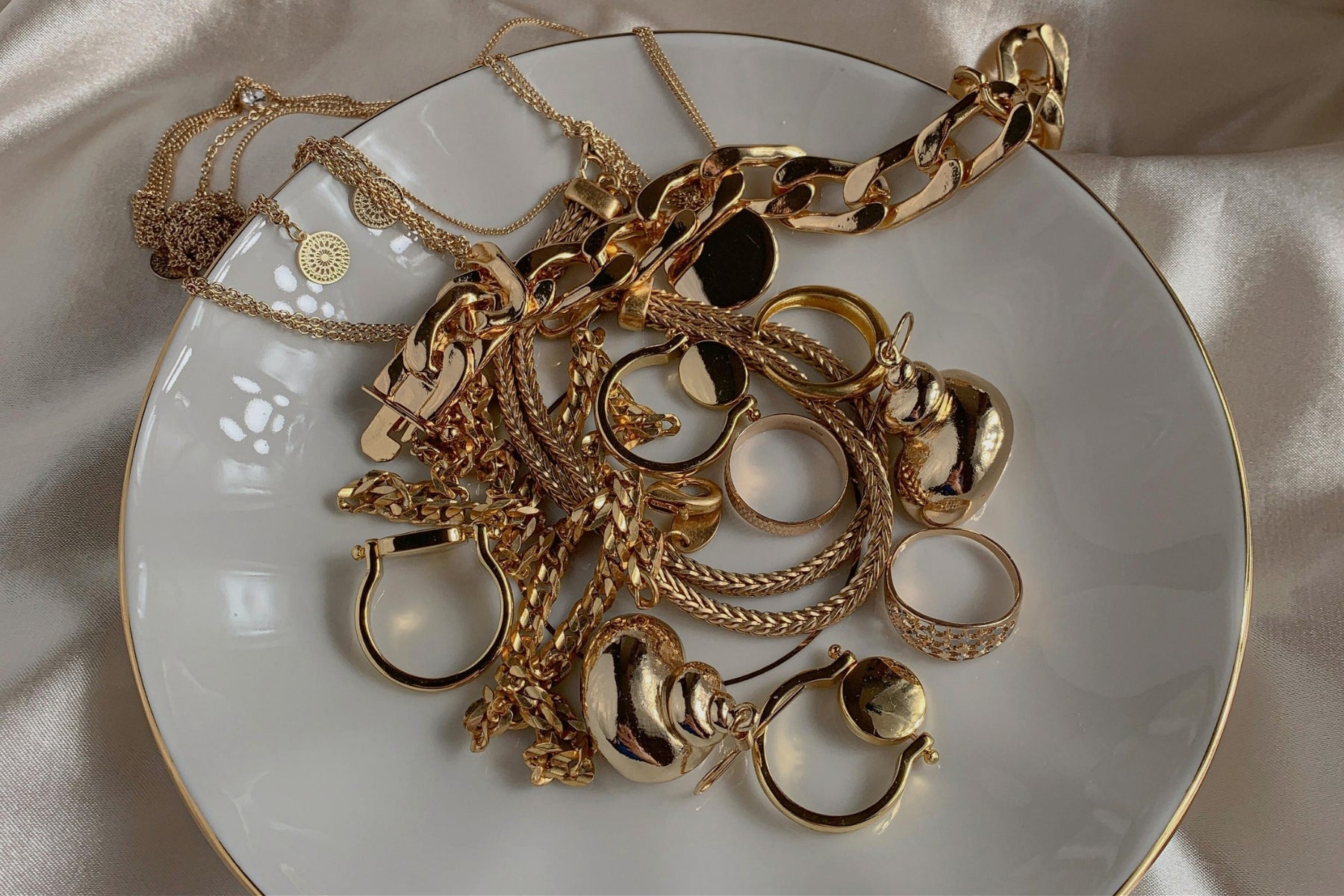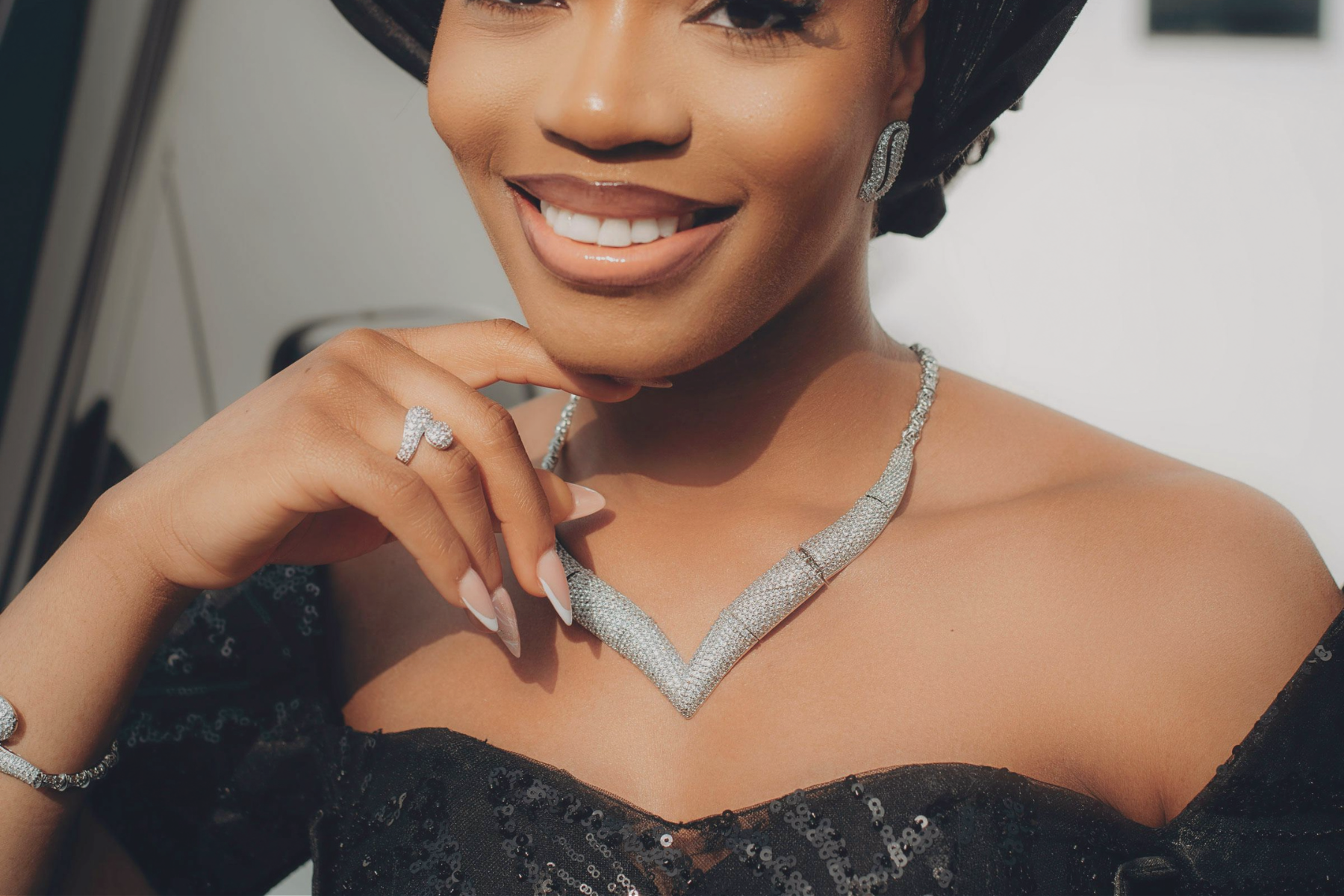
Diamond Quality Guide: How To Buy The 4C's Diamonds
Not all diamonds are created equal. Each diamond on earth is unique. There are a variety of shapes and sizes, with each diamond featuring its own set of internal characteristics that make it different from any other. Which brings us to this point. Obviously, you want to make sure that any diamond you purchase is of the best quality. Not only because of the financial investment, but also because of the emotional aspect. Diamonds are often equated with celebrating milestones, love, self-worth, and rarity. So, you definitely don't want a poor quality diamond to represent how you feel. The question is, how do you determine diamond quality? Our diamond buying guide below focuses on the answers to that question by discussing the 4Cs - color, clarity, cut, and carat.
Diamond Color
One of the factors that determine the quality of a diamond is its color or, more appropriately, it's lack of color. According to the diamond color grade scale created by the Gemological Institute of America (GIA), diamonds have degrees of coloration, ranging from clear or colorless to varying shades of yellow. The less color a diamond has, the higher the quality. The diamond color rating system uses the letters D through Z to label the degree of colorlessness of a diamond.

Source: gemsociety.org
Take note that the distinctions between diamond color grades can be so subtle that you won't be able to see it unless you've been trained to notice them. That being said, the degree can significantly impact the diamond quality and price. One thing you should note before we go any further is the fact that the color of diamonds is not limited to the range provided by the GIA. Naturally colored diamonds such as pinks, yellows, and blues (a.k.a. fancy-colored diamonds) are rated on a separate scale.
Colorless
Diamonds that are colorless are rated D, E, or F. These diamonds are the rarest and most valuable. When a diamond is completely colorless, all the natural light is reflected back to your eye, making it appear radiant. When there is a tinge of color, the less radiant it becomes. D grade diamonds are truly colorless. E grade diamonds look very similar and are almost as pricey as the former. Even gemologists can find it difficult to distinguish between the two unless they're doing a side-by-side comparison under magnification. F grade diamonds, on the other hand, may show a very minute amount of color when face down. However, this is undetectable to the naked eye, especially to an untrained one.
Near Colorless
The near colorless range includes G, H, I, and J. To the naked and untrained eyes, diamonds with this color grade do appear colorless. In fact, G and H grade diamonds can appear cool, icy white (like the colorless grades) if they are well cut. And since their prices are typically less than half of the premium ones, near colorless diamonds are the most popular choice among buyers. They provide that balance between beauty and budget.
Faint Color
Faint color or faintly tinted diamonds are graded K, L, or M. Most people will be able to detect that tinge of color without having to wear a loupe or compare it with diamonds graded differently. For this reason, diamonds in this category need to be placed in a yellow gold setting to make them appear colorless.
Very Light Yellow
Also known as lightly tinted, diamonds in this color grade range (N-R) have a noticeable yellow or brown tint. Because of this, they are generally less expensive compared to the other grades. You will need to be careful in choosing the settings to keep the color from becoming too apparent.

Light Yellow
Also called heavily tinted, these diamonds range from grades S-Z. The color is usually easy to notice even when mounted.
Note: Only certified diamond grading professionals can determine the color rating. If you want to determine the color grade of a particular piece, you should compare it side-by-side with a diamond that has a known grading under the right conditions.
Diamond Clarity
Clarity is the second factor that helps determine diamond quality. Experts define clarity as the lack of imperfections or the absence of inclusions and blemishes. To explain all of that, you must first understand how diamonds are made. Natural diamonds are created when carbon atoms 100 miles deep in the Earth are exposed to extreme heat and pressure. This process inevitably causes surface flaws/irregularities (blemishes) and internal characteristics (inclusions) to occur. Take note that most inclusions aren't visible to the naked eye; they're too small to see unless you use 10x magnification. And a high diamond clarity grade won't ensure that your diamond will have more sparkle or look more beautiful. Moreover, there are five different factors that affect diamond clarity - size, number, position, nature, and color & relief.
Size refers to how large or noticeable the characteristic is. The more noticeable it is, the lower the clarity grade. Number refers to how many characteristics are easily seen. Position refers to where the characteristic is located (e.g. is it under the table where it is most visible?). Nature relates to the type of inclusion and how it affects the durability of the diamond. Color and relief refers to how much contrast there is between the characteristic and the rest of the diamond, making the "flaw" more easily seen.
The diamond clarity grades are as follows:

Source: gemsociety.org
- Flawless (FL)
There are no blemishes or inclusions that can be seen under 10x magnification.
- Internally Flawless (IF)
There are no inclusions under 10x magnification. There may be insignificant surface blemishes that can be removed by minor polishing.
- Very, Very Slightly Included (VVS1 and VVS2)
Inclusions are present but difficult to see even for a skilled, certified grading professional under 10x magnification.
- Very Slightly Included (VS1 and VS2)
Inclusions can be seen with effort using 10x magnification, but not visible to the naked eye; they do not have an impact on the appearance of the diamond.
- Slightly Included (SI1 and SI2)
Inclusions are noticeable under 10x magnification, possibly visible to the naked eye.
- Included (I1, I2, and I3)
Inclusions are clearly visible under 10x magnification which may have an effect on the diamond's transparency and brilliance.
Diamond Cut
Of all the 4C’s, cut is undoubtedly the most important factor that determines diamond quality because it directly impacts its aesthetic appearance. You got that chic diamond ring and you want it to shine bright, right? Now, when we refer to cut, we’re not talking about its shape. Rather, it refers to how the various facets of the diamond are able to interact with light. In short, this rates how much the proportions, symmetry, and polish of a diamond contribute to its brilliance.

Source: selectingadiamond.com
A well-cut diamond is bright, full of fire, and has a sharp appearance. A poorly cut one looks dull. Reputable graders use different labels when creating their diamond grading scale. However, they typically all use the same factors - symmetry, polish, weight ratio, brightness, fire, and scintillation. Brightness refers to the white light reflected by the diamond. Fire refers to the flashes of color that is a result of the dispersion of light (similar to a prism). Scintillation is the sparkle and the pattern of light and dark areas that is caused when light is reflected within the diamond.
Carat Weight
Most of us are probably aware of what a carat is. But for the sake of clarity, a carat is the unit of measurement used to refer to the diamond's weight. A carat is equal to 0.2 grams. Each carat is divided into 100 points. One point is equal to one hundredth of a carat. This enables the precise measurements of diamonds up to the hundredth decimal place.

Source: 4cs.gia.edu
And it is why you may hear some people refer to a diamond carat weight of 0.83 as "eighty-three points" or "an eighty-three pointer." How does weight affect quality? The value of a diamond goes up the more mass it has. This is because larger diamonds are much rarer compared to smaller ones. For the same reason, a larger diamond will cost more per carat compared to 4 small diamonds with the same combined weight. That being said, carat weight is just one of the factors that determine value.
Diamond Quality is in the Eye of the Beholder
You don’t always have to get the rarest and most valuable diamond that you can afford. This knowledge we’ve imparted should also help you get the right diamond at the best price. It’s all a matter of balancing the 4C’s, the diamond shape, and the setting.


